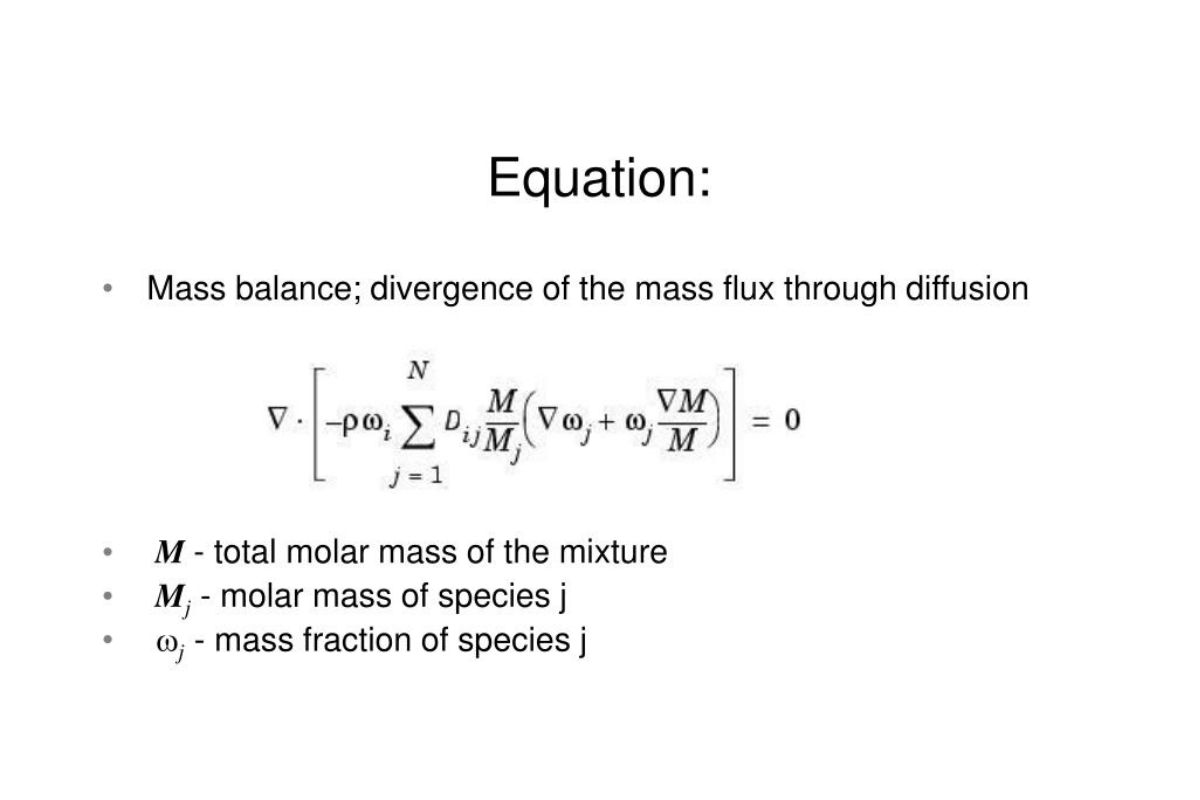
What are the Stefan-Maxwell equations? These equations describe how different gases mix and move. They help scientists understand how molecules of various gases interact and spread out over time. Why are they important? They play a crucial role in fields like chemical engineering, environmental science, and even space exploration. By using these equations, experts can predict how pollutants will spread in the atmosphere or how fuel will mix in a rocket engine. How do they work? They use mathematical formulas to represent the movement of each gas in a mixture, considering factors like concentration and pressure. Want to learn more? Keep reading to uncover 31 fascinating facts about these essential equations!
Stefan-Maxwell Equations: An Overview
The Stefan-Maxwell equations describe the transport of multiple chemical species in a mixture. These equations are crucial in fields like chemical engineering, physics, and environmental science. Here are some fascinating facts about these equations.
-
Origin: The equations are named after Josef Stefan and James Clerk Maxwell, who contributed to the theory of gas diffusion.
-
Multi-component Diffusion: Unlike Fick's law, which deals with single-component diffusion, Stefan-Maxwell equations handle multi-component systems.
-
Mathematical Complexity: These equations are more complex than Fick's law because they involve solving a system of coupled differential equations.
-
Applications: Used in designing chemical reactors, predicting pollutant dispersion, and understanding biological processes.
Historical Background
Understanding the history behind these equations provides context for their development and importance.
-
Josef Stefan: An Austrian physicist who formulated the law of thermal radiation, contributing to the diffusion theory.
-
James Clerk Maxwell: Known for Maxwell's equations in electromagnetism, he also made significant contributions to kinetic theory and gas diffusion.
-
19th Century: The equations were developed in the late 19th century, a period rich in scientific discovery.
-
Kinetic Theory of Gases: The equations are rooted in the kinetic theory, which describes gas molecules' motion and interactions.
Mathematical Formulation
The mathematical structure of the Stefan-Maxwell equations is intricate but fascinating.
-
Coupled Equations: The equations form a system of coupled, non-linear differential equations.
-
Mole Fractions: They use mole fractions to describe the concentration of each species in the mixture.
-
Diffusion Coefficients: These coefficients are crucial parameters in the equations, representing how easily one species diffuses through another.
-
Binary Interactions: The equations account for binary interactions between different species in the mixture.
Practical Applications
The real-world applications of Stefan-Maxwell equations are vast and varied.
-
Chemical Engineering: Used in reactor design, optimizing reaction conditions, and scaling up processes.
-
Environmental Science: Helps in modeling the dispersion of pollutants in the atmosphere or water bodies.
-
Biological Systems: Applied to understand nutrient transport in cells and tissues.
-
Petrochemical Industry: Essential for designing separation processes like distillation and extraction.
Computational Challenges
Solving Stefan-Maxwell equations is not straightforward and presents several computational challenges.
-
Numerical Methods: Often require advanced numerical methods for solutions, such as finite element analysis.
-
Computational Power: High computational power is needed to solve these equations for complex systems.
-
Software Tools: Specialized software like MATLAB or COMSOL Multiphysics is often used.
-
Convergence Issues: Ensuring the numerical solution converges to the correct answer can be tricky.
Advanced Topics
For those delving deeper, several advanced topics related to Stefan-Maxwell equations are worth exploring.
-
Non-ideal Mixtures: The equations can be extended to handle non-ideal mixtures where interactions are more complex.
-
Thermodynamic Coupling: They can be coupled with thermodynamic equations to account for energy changes.
-
Transient Analysis: Used to study how systems evolve over time, not just at steady-state.
-
Multi-phase Systems: Applied to systems with more than one phase, such as gas-liquid mixtures.
Educational Importance
Learning about Stefan-Maxwell equations is essential for students in various scientific fields.
-
Curriculum: Often included in advanced courses in chemical engineering and physical chemistry.
-
Research: Provides a foundation for research in transport phenomena and reaction engineering.
-
Problem-solving: Enhances problem-solving skills by dealing with complex, real-world systems.
-
Interdisciplinary: Bridges concepts from physics, chemistry, and engineering.
Future Directions
The study and application of Stefan-Maxwell equations continue to evolve.
-
Machine Learning: Emerging techniques like machine learning are being used to solve these equations more efficiently.
-
Sustainability: Important for developing sustainable processes and reducing environmental impact.
-
Innovation: Ongoing research aims to simplify the equations and make them more accessible for practical use.
The Final Word on Stefan-Maxwell Equations
Stefan-Maxwell equations are crucial for understanding multicomponent diffusion. These equations help predict how different gases or liquids mix and move. They’re used in fields like chemical engineering, environmental science, and biotechnology. Knowing these equations can improve processes like air pollution control, drug delivery systems, and fuel cell technology.
Understanding the basics of these equations can be a game-changer. They provide a framework for solving complex problems involving multiple substances. While they might seem daunting at first, breaking them down step-by-step makes them more approachable.
So, whether you're a student, a professional, or just curious, diving into Stefan-Maxwell equations opens up a world of possibilities. They’re not just theoretical; they have real-world applications that can make a difference. Keep exploring, keep learning, and see where this knowledge takes you.
Was this page helpful?
Our commitment to delivering trustworthy and engaging content is at the heart of what we do. Each fact on our site is contributed by real users like you, bringing a wealth of diverse insights and information. To ensure the highest standards of accuracy and reliability, our dedicated editors meticulously review each submission. This process guarantees that the facts we share are not only fascinating but also credible. Trust in our commitment to quality and authenticity as you explore and learn with us.
